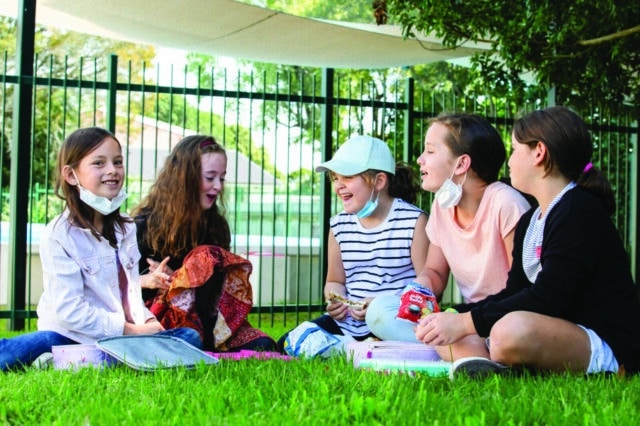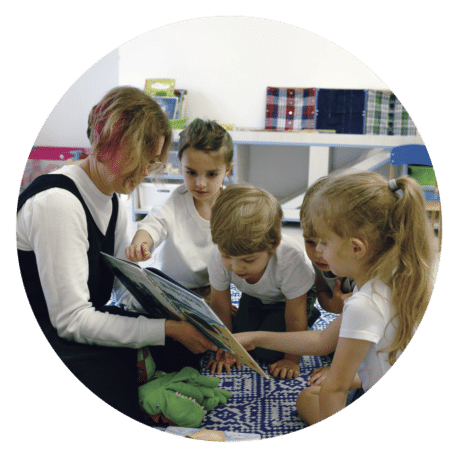
WE, LIKE SO MANY parents, wondered how our two sons Carlos and Ashwin were going to cope with school after their time at kindergarten.
The transition is a time that can create a significant amount of stress and concern for parents.
The gaps between your current kindergarten provider and a mainstream school may seem too far to reach.
We learned many lessons about transitioning our autistic children into a mainstream primary school and our recommendations follow.
Getting started
Schools have a daily structure and routine that can be a substantial change for our kids.
If your kindergarten already uses daily structure for meals, playtime, mat time, etc, then the transition can be a bit easier.
But if it does not, the change to school will be more difficult for your child to get used to.
Try to get your child into a routine for different activities. A consistent time for morning tea, lunch, afternoon tea, as well as activities such as reading time, playtime, etc.
We were fortunate that our kindergarten already had a strict daily routine which is one of the reasons why we chose it. Our kids respond to routine well and like to do the same things at the same time.
The key thing is to get our kids used to a routine; create a timetable and put it somewhere the kids can refer to and remind them by using the timetable when activities are going to happen.
This can be like any family routine that you use in the evenings or weekends. Ask your school for a timetable that you can simplify to show your child so they can begin to learn and refer to.
Individual Education Plan
You may already have an Individual Education Plan for your child at kindergarten, and if you do not, it may be a good idea to begin one.
It is simply an agreed list of goals and activities created by parents, teachers, and your Early Childhood intervention centre key worker.
I will use ‘key worker’ several times in this article.
A typical goal could be to learn how to hold a pencil, write their name, eat a different fruit, use the bathroom, play with other children, etc. This is customised for your child and their own unique challenges. Your transition to school plan should be making use of your Individual Education Plan with key goals preparing your child for school.
School Passport
A School Passport is a unique document you create to inform the new school, teachers, other students, and other parents, about your child.
It can be as long or short as you feel but should cover some key points about your child to help others understand your child better.
You may include a photo, their favourite toy/teddy, favourite colour, favourite food/meal, what their family looks like, any pets, what games they like, things they do not like to do, and things that may upset them.
It is a document used to educate the school, so they are better prepared for your child.
Your kindergarten and key worker could be offered the opportunity to provide feedback as they may offer some good advice for the schoolteachers.
Additional details
Ask your kindergarten if they are happy to provide either a written or verbal overview of your child to the new school’s key teaching staff.
Kindergarten and schoolteachers may share common terminology and processes within their respective professions.
Thus, there may be key insight shared between both professionals if they are happy to discuss before the transition takes place, or even during the transition phase.
Ongoing Resourcing Scheme funding
Your key worker will discuss with you the Ongoing Resourcing Scheme funding and application process.
There is a lot of information required and the process does take time, so ensure you are working on this process with plenty of time.
The process is better discussed with your key worker, but there is one key question that you will need to consider; what if you do not get the funding? Or the funding is less than you expected? If you are unsuccessful with Ongoing Resourcing Scheme funding, then you are part of a group of many other families that must find solutions to support their child outside the process.
This is best discussed with your selected school as to what other options that may be available for funding. This also depends on the number of resources your selected school already has in respect to teaching assistants and other teaching support resources.
This can be a key question that you ask your potential schools when you interview them.
Visiting Potential Schools
I do not have any experience of special schools and will continue to focus on mainstream schools instead.
You will need to do some homework on the geographic zoning for your current residence.
This will provide the initial options for schooling. However, do not be afraid to select schools outside your zone, and contact them to ask if they would consider your child.
The worse that can happen, is they say ‘no.’ We had two local primary schools that our child could apply to, but we also chose two other primary schools outside our zone, and we wrote to the principal asking for an opportunity to meet and discuss our child potentially attending their school.
We were pleasantly surprised when they both agreed to meet with us for an interview.
You should have a few interviews to compare schools, resources, strengths, weaknesses, and the attitude of the school leadership.
We approached the selection and interview process with a different attitude; we want to choose the best school for our child, not a school willing to accept a child with specific challenges.
Expect the best for your child and ask potential schools to put forward the ‘value’ that they can add to your child’s specific development.
There are other resources you can use to select schools, such as talking with other parents and using online resources that provide information about the schools you want to interview.
Preparing for the visit
The school visits should be set up formally by your key worker.
Try not to have your child at the initial school visit as you need to be focused on the discussion you are about to have.
Both parents (if applicable) should attend as well as the key worker.
You could choose others but try not to have too many attending.
From the school, it would be better to have both the principal and a key teacher involved.
The principal will give you a good idea of the culture of their school, particularly, the attitude towards children with special challenges.
Preparing your questions is vital in helping you choose the best school for your child.
Remember, no one knows your child better than you. You need to cover any items of concern you have that are unique to your child, along with educating the school as to essential information they need to be aware of.
Key questions may include security, fencing, teacher assistant resources, class sizes, Ongoing Resourcing Scheme funding, etc.
After each school visit it is especially important that you and your key worker document the positives and negatives.
Documenting how you felt about the meeting immediately afterwards is important when comparing the schools at a later stage.
We wrote down our thoughts in the car immediately after each school visit.
You should avoid selecting the school until all meetings are completed and documented.
Write an email of thanks to each school for their time and consideration.
Preparing your child
Once you have selected your child’s new school, begin talking about the new school as much as possible.
Let your child get used to the idea of an exciting new place to go.
Ask other members of your family and friends to also talk about the school in an exciting and comforting way.
Include their new teacher and new kids to play with, along with new toys to play and new books to read.
Look for reasons to drive past the new school on weekends and wave out or honk the horn to say ‘Hi.’

Ask for permission from the school and go for a walk around the school grounds on the weekend.
Play on the playground with your child, walk around the school buildings, and show your child the pickup and drop off points.
Let your child see how excited you are about their new school, and they will feel more interested and accepting of their new adventure.
Set up ‘play dates’ with other children that go to the school so that your child will know a familiar face during their first few days.
Setup a school visit with your child, new teacher and principal, if possible, before their first day at school.
Show your child their new class, where they may sit or put their bag, where the toilet is, and where their ‘safe’ place is. I will discuss the ‘safe’ place further in this article.
Preparing your School
Connect your kindergarten to the new school.
Any extra advice could be a significant help to your child’s new teacher.
Share your updated Individual Education Plan with the new school, particularly your child’s new teacher and with the principal.
Develop it after the first month and use it as the base for your child’s new school plan and setup regular Individual Education Plan update meetings and update it regularly after that.
Share your child’s School Passport with your child’s new teacher and principal.
Allow them time to ask questions before your child starts school.
Our school read out our child’s passport to the class before he started and tried to prepare the children so they could welcome our child and make him feel more comfortable.
Safe place
It may be useful to create an area in the school to be used as a ‘safe place’ for your child, should they need to be on their own to regulate or find quiet time.
This place should be away from other children, quiet, safe, and secure.
Include some of your child’s favourite items to help them calm down or feel safe when they need to.
We chose the library as it was next to our child’s classroom, and only one door down the hall. We placed our child’s beanbag and a favourite teddy in there, so they could calm down with some familiar items.
Other options to include could be headphones with music, ear plugs, etc.
Attendance plan
Agree with the new school on a plan of attendance for your child, for at least the next month.
This plan is unique to each child and should be discussed with your key worker’s involvement.
The intent is to gradually increase your child’s attendance at school over a period.
Ongoing Resourcing Scheme funding
Keep your school updated on the Ongoing Resourcing Scheme process and any decisions.
Once you know, discuss it with the school and what other options are available if your funding application was unsuccessful.
Each school will be different with regards to the resources that it can offer, so this conversation is unique to your child and the school.
Conclusion
The transition to school can seem like a mountain too high to climb, but all parents must face it, and its best to try one step at a time.

Maia Kawana
Take comfort in the fact that many other parents have embarked on this journey with the same fears and concerns.
- Maia Kawana is a father of two autistic children who are currently both attending a mainstream primary school. Maia is also a member of the Altogether Autism Advisory Group.


